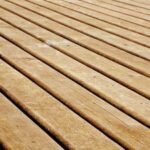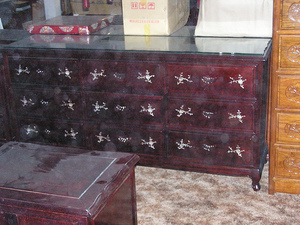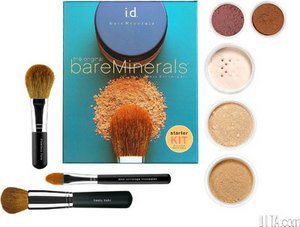If you are considering building or having a deck built on to your home this Spring, now is the time to start planning. There are many different kinds of materials to choose from when building. I will give you ten of the most popular and tell you why they are usually chosen.
One: Cedar. By far and away cedar is the most popular choice for decking. It is durable, attractive and light and easy to work with. It is also great for resistance as it does not decay as quickly as many other types of wood do. You can make the boards yourself, or because it is so popular, purchase them already precut to your size of choice. Splintering of cedar is minimum. The down side of Cedar is that while it will last for many years if properly maintained, its strength level of its nature is fairly low. This wood needs to be coated yearly with a sealer to maintain its beauty.
Two: Mahogany is a great wood to use if you are looking for simple elegance. It is very rich in color and pleasing to the eye. While a bit more expensive than Cedar, it is still manageable (price-wise) and like the Cedar, is conducive to outdoor spaces because of its durability and minimum splintering.
Three: Cypress wood, while not as easy to find as Cedar or Mahogany is a great type of wood to use for outdoor decking because like the aforementioned it is resistant to rotting and fairly easy to work with. The great thing about Cypress is that no two patterns will look the same so you can be fairly assured your finished deck will turn out unique in its look. Cypress is a moderately strong type of wood to use for building.
Four: Pine is classic for outdoor wood use. It is lightweight, easy to use, attractive and simple to paint, if desired. It is also one of the lesser expensive types of wood that you can purchase because of its ready availability. Creating railings and seating with Pine is also fairly easy to do because of its simplicity to work with. This wood is moderately strong, which assures you of its sustainability.
Five: Redwood is popular because it has a beautiful red hue to it and the finished product from it, if constructed correctly, will most assuredly be quite beautiful. It is resistant to decay and fantastically easy to work with. It can be painted easily, but why would you? The down side to this type of wood is that, while well worth it, it can be quite expensive and it is not as strong as Cypress or Pine.. Coating with sealer annually is important for maintaining Redwood’s beautiful look.
Six: Exotic woods are wonderful to use if you are looking for something out of the ordinary and something that excels in strength, but be well advised that along with individuality comes a high price. Almost triple the price of Cedar or Cypress and double the price of Redwood you are paying for the grandiose look, to be certain. Ipe, a beautiful dark chocolate Brazilian hardwood is a great choice because its strength factor is second to none, it is fire resistant and insects hate it. Meranti is also a very strong exotic wood that is popular for use in expensive one-of-a kind decking. Be forewarned, however, that most exotic woods, most especially the Ipe, while fantastic in many ways (including beauty, durability and minimal maintenance factors) can be very difficult to work with and they always have to be special ordered.
Seven: Pressure-treated Fir wood is fairly strong and is easy to use. The color is usually tinted green or brown and it is very inexpensive to use and easy to find. Because it is pressure treated it will resist rotting. It is not hard to work with but precautions must be taken when using it so that toxins are not released into the environment.
Eight: Composite lumber is not the same quality that real wood is, but it is very realistic looking in nature. Not expensive to purchase and wide availability make it popular, as well as its reputation for being quite durable. It is very easy to work with.
Nine: Synthetic choices such as recycled rubber, plastic and vinyl are also made into durable decking. Rubber Lumber comes from recycled tires and old plastic proves itself very durable, does not fade easily and as with the Ipe Wood, insects abhor it. Plastic decking comes in colors outside of traditional wood and is very easy to work with. Vinyl decking looks nothing at all like wood but comes in a wide array of colors, is easy to work with and does not readily fade. The down side of synthetic is that it is most generally only available for the construction of the deck alone. If you are looking for railings, furniture, built-in seating, etc. you will most likely have to choose a different type of material (at least for those additions).
Ten: Tried and true for centuries, many people still choose to use concrete for their deck construction. Practically maintenance free, inexpensive and readily available, in the right situations, this choice can prove quite lovely. It is, however, hard to reverse once put in, if not impossible, so leave no room for doubt if using this is your deck material of choice.
Research your material of choice well before purchasing it, both by reading, consulting professionals, and by word of mouth. Your deck, if constructed properly should bring you years of joy, relaxation and great entertainment value.







